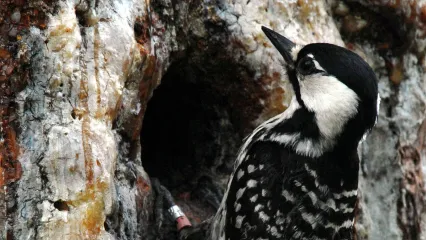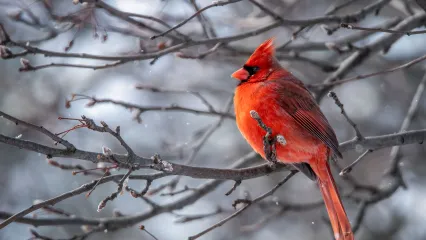
Description
The red-cockaded woodpecker is a small woodpecker approximately 7 inches long. This species is named for the rarely-visible red “cockade” that is on the back of the male’s head. Though similar in color and pattern, this woodpecker can be distinguished from other species by its conspicuous white cheek patches and heavily barred back.
Size
Approximately 8.5 inches in length.
Habitat
Historically, the red-cockaded woodpecker occurred throughout the shortleaf pine-dominated forests in McCurtain, Pushmataha, LeFlore, and Latimer counties, and may have even occurred in portions of the Ozarks in northeastern Oklahoma. The only remaining population in the state lies on the McCurtain County Wilderness Area and adjacent Ouachita National Forest. This population has fewer than 50 birds. In Oklahoma, these woodpeckers nest only in mature (more than 80 years old) shortleaf pines that are also infected with red-heart fungus disease. This disease causes the heartwood of the pine to rot, thereby allowing the woodpeckers to more easily excavate a cavity. Living trees also continue to produce sap, or resin, which allows red-cockaded woodpeckers to create a sticky barrier around the cavity entrance. This deters snakes and other predators from climbing the tree, increasing the chances of survival for adults, eggs, and chicks.
Life Cycle
Unique among woodpeckers, this bird nests almost exclusively in living pine trees. In Oklahoma, nesting begins in late April and early May. Two to four eggs are incubated for only 10-12 days. Chicks fledge at 26 days, but may remain near the nest tree for several days thereafter. This is one of only two North American woodpecker species with a cooperative breeding system, where young birds, known as “helpers,” from previous broods remain in the territory to assist the breeding pair with the raising of young. Family groups live in a stand of cavity trees, called a “cluster.” These groups vary in size, but most commonly consist of the breeding pair and 1-3 helpers.



